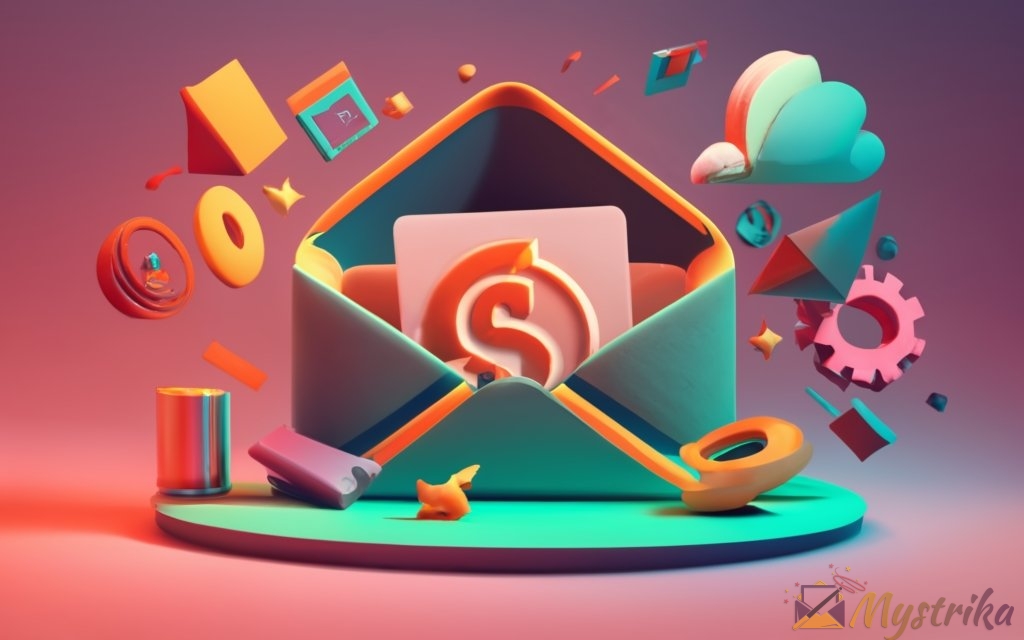Want to ensure your cold emails consistently land in inboxes and not the spam abyss? Proper email warm-up is the key to unlocking better deliverability, improving engagement, and maximizing the impact of your campaigns. Join us as we dive into the ins and outs of effective account warm-up processes, top-rated tools to streamline it, and tips to avoid common mistakes.
Whether you are looking to get started with warming up accounts for the first time or want to optimize existing efforts, this comprehensive guide has you covered! Arm yourself with the email warm-up mastery needed to get your messages seen.
What is Email Warm-Up and Why is it Important?
Email warm-up refers to the process of gradually building up the sending reputation and deliverability of a new email account or domain before using it for full-scale email marketing or outreach campaigns.
The main purpose of warming up an email is to establish trust and credibility with major email service providers like Gmail, Outlook and Yahoo so that your messages consistently land in the intended recipients’ inboxes rather than getting filtered as spam.
Why Emails Get Marked as Spam
When an email service provider (ESP) detects a brand new sending domain or email address suddenly sending high volumes of mail, it will be highly suspicious of spam or abuse.
Some key triggers that make ESPs classify emails as spam include:
- New, unrecognized sending domain – No established reputation.
- High initial sending volume – Looks like spam blast.
- Low engagement metrics – Lack of opens, clicks signals disinterest.
- User spam complaints – Recipients marking mail as junk.
Once messages are flagged as spam, ESPs will start automatically routing all future emails from that sender straight to the spam folder. This leads to terrible deliverability and inbox placement.
The Purpose of Warming Up Accounts
Email warm-up tools and services work to methodically build up the deliverability of an email account through realistic mail flow patterns that mimic organic engagement growth.
The goals of warming up accounts include:
- Gradually increase sending volume – Ramp up from a few to thousands of emails over weeks. This looks natural to ESPs versus sudden spikes in volume.
- Generate real inbox interactions – Warm-up systems engage with your emails via opens, clicks and replies. This establishes your mail as wanted.
- Avoid sudden spikes or drops – Steadily transition between low and high volumes. Drastic changes appear suspicious.
- Create positive engagement history – Open and reply activity signals recipients find your content relevant.
Why Proper Warm-Up is Vital
Warming up email accounts before full use is critical because once tagged as spam, accounts can be permanently damaged or even blacklisted by major ESPs.
The stakes are too high to ignore warm-up:
✅ Preserve deliverability – Ensure emails consistently reach inboxes.
✅ Maintain sender reputation – Build trust with ESPs by looking like a legitimate business.
✅ Increase engagement – Benefit from greater open rates and conversions.
✅ Avoid blacklists – Stay off blocking lists that can kill email accounts.
Key Benefits of Warming Up Accounts
Here are some of the major benefits that come from properly warming up new email accounts and domains before putting them into action:
- Higher inbox placement rates – Warm-up establishes you as a wanted sender.
- Improved sender reputation – Gradual volume growth looks natural to ESPs.
- Increased open and reply rates – Realistic engagement activity boosts metrics.
- Reduced spam complaints – Recipients less likely to report wanted mail as spam.
- Lower bounce rates – Proper IP and domain reputation leads to fewer bounces.
- Prevent blocking or blacklists – Keep accounts in good standing by avoiding red flags.
- Maintain deliverability over time – Ongoing warm-up keeps accounts in top shape long-term.
What Happens Without Proper Warm-Up?
If you put a brand new, unwarmed email account into action sending cold outreach campaigns or email marketing blasts, here is what will likely happen:
- Immediate spam folder routing – ESPs will suspect spam from a new sender domain.
- High spam complaints – Recipients will report your “spammy” messages.
- Decreased sender reputation – Engagement and complaint rates will tank your rating.
- Lower future deliverability – Once tagged as spam, all mail will be filtered.
- Higher bounce rates – New IP addresses often have poor initial DNS/SPF setup.
- Possible account blocking – Enough strikes can lead to temporary or permanent blocking.
Don’t Skip the Warm-Up Process!
Based on the severe deliverability impacts seen when attempting to use new accounts without warming them up first, it is clear this step cannot be skipped.
Warming up your email accounts is a bit like stretching before a run – it prepares your body for peak performance and prevents injury or harm.
Account warm-up sets the stage for email success by ensuring your messages seamlessly land in your recipients’ inboxes every time. The slight upfront effort is well worth it in the long run!

Main Strategies and Tools for Warming Up Email Accounts
When it comes to warming up email accounts, there are two primary strategies – gradual volume ramp-up and generating real inbox engagement. You can implement these methods yourself manually or utilize dedicated paid and free email warm-up tools and services to automate the process.
Let’s explore the key strategies and tool options in more detail:
Gradual Send Volume Increase
One of the main strategies behind effective email warm-up is to steadily and gradually increase your sending volume over days or weeks until you reach your target levels.
This controlled, incremental growth pattern mimics natural account usage and helps avoid triggering spam filters.
Why Incremental Growth Works
- Looks organic – Mimics natural engagement growth vs sudden spikes.
- Builds trust – Shows ESPs you are ramping up like a real business.
- Gains momentum – Each increase boosts reputation for next growth step.
- Flexible pacing – Faster or slower volume increments based on engagement.
Common Volume Ramp-Up Patterns
- Linear – Smooth, steady linear progression of daily emails sent.
- Tiered – Volume held steady for period then increased to next tier.
- Exponential – Daily volume doubles after fixed periods until target met.
- Custom Schedules – Volume increases customized to unique needs.
Pro Tip: Avoid drastic spikes or drops in daily send volume, as this can raise red flags with ESPs.
Generating Realistic Engagement
The other vital part of account warm-up is showing real inbox activity like opens, clicks and replies to youremails. This signals recipients find your content relevant.
Why Engagement Matters
- Makes messages seem wanted vs unwanted spam.
- Improves metrics used to assess sender reputation.
- Provides feedback to refine content for better results.
- Maximizes eventual open and click rates from target audience.
Options for Driving Engagement
- Manual – Self-driven process between established connections.
- Tools – Automated engagement from inbox network.
- Hybrid – Mix of manual and automated engagement.
Pro Tip: Prioritize clicks and multiple opens over single opens, as they better demonstrate interest.
Paid Warm-Up Tools
Rather than manually conducting warm-up, specialized paid tools can fully automate the process to save enormous time and effort.
Benefits include:
- Hands-free automation – Set it and forget it.
- Detailed analytics – Track all key metrics and fine-tune strategy.
- Inbox provider integration – Warm up across all major ESPs seamlessly.
- Latest features – Access most advanced warm-up capabilities.
What to Look for in Paid Tools
- Real inbox network – Large pool of established, reputable inboxes.
- Custom engagement – Fine-tune open, click, reply rates.
- Gradual volume control – Increment send rate daily or weekly.
- Comprehensive analytics – Review all key performance indicators.
- Reasonable pricing – Avoid excessive fees or hidden costs.
Free Warm-Up Options
If paid tools don’t fit your budget, free email warm-up alternatives do exist but have limitations:
Modes of free warm-up:
- Manual – Do all sending and coordination yourself.
- Basic tools – Limited capabilities and analytics.
- Trial offers – Time-restricted access to paid tools.
Considerations with free options:
- Requires extensive manual effort.
- Generates less realistic engagement.
- Minimal insights into performance.
- Cannot reach high volumes quickly.
- Higher chance of spam missteps.
The Bottom Line: Free warm-up works but paid tools deliver superior automation, insights and results. Evaluate options to determine the best fit.
Weighing the Tradeoffs
When deciding between paid vs free warm-up methods, weigh factors like:
- Available time and workload
- Desired scale and speed
- Need for comprehensive analytics
- Long term deliverability objectives
Find the right balance for your resources and goals. Supplement free methods with paid tools as needs evolve.
Takeaway Points
- Gradually ramping up send volume is critical for effective warm-up.
- Generating real inbox activity improves engagement metrics.
- Paid tools provide robust automation and analytics.
- Free options work but require extensive manual effort.
- Weigh tradeoffs mindfully when selecting an approach.
No matter what route you choose, proper warm-up lays the foundation for future email success. Invest time into this process to maximize deliverability.

Step-by-Step Guide to Warming Up an Email Account
Warming up a new email account properly involves carefully researching tools, integrating the account, configuring optimal settings, monitoring performance, and refining the warm-up process over time.
Here is a step-by-step guide to effective email account warm-up:
Step 1 – Select a Warm-Up Tool or Service
First, research and select an email warm-up tool or service that meets your needs and budget.
Key selection criteria include:
- Automation – Look for robust automation to remove manual work.
- Inbox network – Larger real inbox pools offer better engagement.
- Volume control – Increment sending gradually in a customizable way.
- Comprehensive analytics – Detailed metrics to optimize as you go.
- Email provider integration – Warm up seamlessly across ESPs like Gmail.
- Pricing – Avoid excessive fees but don’t sacrifice key features.
- Reviews – Positive feedback and ratings from real users.
Take advantage of free trials to test tools firsthand before purchasing.
Recommended providers: Mystrika, Mailreach, Folderly, Warm Up Your Email
Step 2 – Integrate the Email Account
Once you’ve selected a warm-up tool, integrate your new email account with the platform.
To integrate accounts:
- Create an account with the warm-up provider if you haven’t already.
- Follow their procedures to securely connect your email account to the platform.
- Most tools support major inbox providers like Gmail, Outlook, Yahoo and more.
- The process takes just a few minutes in most cases.
Step 3 – Configure the Warm-Up Schedule
With your account connected, configure your preferred warm-up schedule and parameters.
Typical settings include:
- Start/end dates – The duration of warm-up activities.
- Emails per day – How many messages to send daily. Start low.
- Volume increment – How quickly to ramp up send volume.
- Open rates – The % of sent emails opened on average.
- Click rates – The % of opens that click links or buttons.
- Replies – The % of emails receiving reply activity.
Adjust based on target volume, engagement goals and initial performance.
Step 4 – Monitor Performance and Analytics
Once your warm-up sequence starts, carefully monitor performance daily using the tool’s analytics.
Key metrics to watch:
- Emails sent – Track volume increases towards target levels.
- Open, click & reply rates – How recipients engage with messages.
- Bounce rates – Identify potential domain or IP issues early.
- Spam complaints – Receive alerts if recipients report mail as spam.
- Blacklist status – Confirm no sudden IP or domain blocking occurs.
Use insights to refine your warm-up strategy over time.
Step 5 – Optimize Settings Based on Data
If the data reveals opportunities, tweak your warm-up settings to boost performance.
Potential optimizations include:
- Pace volume faster/slower – Increase or decrease daily emails sent.
- Adjust engagement – Change open, click and reply rates up or down.
- Pause warm-up – Stop for a period if metrics look suspicious or spammy.
- Switch IP addresses – Rotate IPs if one develops problems or flags.
- Refine content – Update message content performing poorly.
Let data guide your optimization efforts for maximum impact.
Step 6 – Check Inbox Placement Regularly
Throughout warm-up, regularly check your actual inbox placement with ESPs by sending test emails.
Best practices for testing:
- Send emails to accounts on major ESPs (Gmail, Yahoo, etc) you don’t control.
- Make sure test emails come from warmed account using your cold outreach tool.
- Ask recipients to check inbox placement and report back.
- Target both business and consumer inboxes to see any differences.
- Adjust warm-up approach if messages land in spam folders.
Step 7 – Maintain Warm Status Over Time
Once your target volume and engagement metrics are reached, maintain warm status even during active sending.
Ways to retain warm status:
- Keep sending 5-10% of target volume from warmed account daily.
- Monitor and promptly respond to recipient replies.
- Rotate IP addresses periodically to spread activity.
- Refresh content periodically to avoid going stale.
- Check inbox placement monthly to confirm maintained.
Real-World Warm-Up Example
To make the warm-up process more concrete, let’s walk through a hypothetical real-world example:
The Scenario
- Ashley recently acquired the domain outreachpros.com to promote her consulting business.
- She wants to start sending emails to a large prospect list from [email protected].
- Her list includes 5000 potential prospects she plans to contact.
Step 1 – Selecting a Warm-Up Tool
Ashley researches the top email warm-up tools and decides to go with LemWarm based on features, pricing and positive reviews.
She signs up for a free trial first to test it out.
Step 2 – Integrating Her Email Account
Following LemWarm’s quick setup guide, Ashley securely connects her new email account [email protected] to the platform in just a few minutes.
Step 3 – Configuring the Warm-Up Schedule
Ashley initially configures the following warm-up schedule in LemWarm:
- Start Date – January 1
- End Date – January 31
- Emails Per Day – Start at 10, add 10 per day
- Target Volume – 300 emails/day
- Open Rate – 20%
- Click Rate – 5%
- Reply Rate – 2%
This will ramp up gradually from 10 to 300 emails daily over the month.
Step 4 – Monitoring Performance
Ashley checks the warm-up analytics dashboard every day. She keeps an eye on volume, open rate, inbound spam complaints and her IP’s blacklist status.
Step 5 – Making Optimizations
Noticing low open rates, Ashley tweaks her target open rate higher to 25% and refines some email content that had poor click performance.
Step 6 – Checking Inbox Placement
Ashley sends test emails to contacts and asks them to report on inbox placement with Gmail and Outlook. The emails land in the primary inbox.
Step 7 – Maintaining Warm Status
To maintain warm status after hitting target volume, Ashley keeps sending ~150 emails per day from the account and rotates IP addresses monthly.
Invest Time into Proper Warm-Up
While involving several steps, proper warm-up is the only way to prepare an email account for long-term sending success and maximized inbox placement.
The upfront effort provides enormous dividends down the road through improved deliverability, sender reputation and higher engagement from recipients.
Be meticulous at each stage of the process, leverage data insights, and test inbox placement frequently. With this comprehensive approach, your emails will consistently land where they belong – in the primary inbox!

12 Best Email Warm-Up Tools in 2023
With so many options to choose from, selecting the right email warm-up tool for your needs can be challenging. Here are 12 of the top-rated platforms to consider in 2023:
1. Mystrika
- Best Email Warmup pool, with smart automated warm-up with custom clusters based on your audience.
- $15/month starter plan with unlimited mailbox.
- AI written cold emails, pre-headers, Unibox looping, A-Z testing, etc.
2. Mailreach
- Gradual volume ramp-up with detailed performance analytics.
- Starts at $19.50/month per mailbox.
3. Folderly
- Uses AI to generate incredibly authentic-looking warm-up emails.
- Packages start at $49/month.
4. WarmUpInbox
- Offers detailed email warm-up score and optimal send rate suggestions.
- Starts at $12/month per inbox.
5. Quickmail Auto Warmer
- Equipped with AI-powered algorithm for faster warm-up.
- Has free plan with basic features.
6. Warmbox
- Simple plug-and-play setup and customizable warm-up recipes.
- Solo plan is $19/month.
7. Warm Up Your Email
- Uses real people to drive engagement with your emails.
- Starts at $29/month for individuals.
8. Warmy
- Fully automated warm-up with detailed performance analytics.
- Plans from $49 to $279/month per mailbox.
9. Allegrow
- Real-time monitoring of email reputation, spam score changes and more.
- $36/user/month starter plan.
10. Reply
- Gradual warm-up integrated natively into their sales engagement platform.
- $29/month per email account.
11. Klenty
- Ability to track inbox reach by specific email service providers.
- $25/license/month for email warmup.
12. SalesHandy
- Predicts post-warmup deliverability percentage based on email health score.
- Plans starting at $27/month.
This covers some of the top-rated and most fully-featured email warm-up tools available in 2023 at a range of price points. Conduct your own research to determine which solution best aligns with your specific needs and budget.

How to Choose the Right Warm-Up Tool for Your Needs
With the wide variety of email warm-up tools available, selecting the one that best fits your specific needs and use case is crucial. Here are some key factors to consider when choosing a warm-up platform:
Level of Automation
The degree of automation is a top consideration. Manual warm-up is extremely labor-intensive, while the most automated tools allow you to set it and forget it. Assess your workload and how much time you can dedicate to self-driven warm-up.
Size of Inbox Network
Larger, established inbox networks allow for more natural-looking engagement patterns. More inboxes means greater capacity to gradually scale up send volumes and generate more reliable reputation metrics.
Analytics and Reporting
Comprehensive analytics empower you to monitor metrics like volume, open rates, spam complaints and blacklists in order to refine your approach. Robust reporting is key for optimizing the warm-up process.
Email Provider Integration
Tools that integrate directly with all major ESPs allow you to seamlessly warm up accounts with any provider. Broad inbox support also improves engagement diversity.
Customer Support Options
Many tools provide onboarding assistance and ongoing email or chat support. This helps you handle issues quickly and efficiently as they arise during warm-up.
Pricing and Value
Pricing can range from free to several hundred dollars per month depending on features. Evaluate the value derived compared to cost to avoid overspending. Consider free trials to test tools first.
Business Size and Use Case
Assess features in relation to your specific use case (cold email, newsletters etc.) and business size. For example, larger companies typically require greater automation and scalability.
Take a Tool for a Test Drive
The best way to determine if a warm-up tool is right for you is to take it for a test drive. Sign up for a free trial if available or reach out to the company to demo the platform using your actual email account. Gather firsthand experience before fully committing.
Prioritize Must-Have Features
Make a list of features that are absolute must-haves based on your use case, resources and objectives. Then narrow down the choices to tools meeting your core needs. Desired nice-to-have capabilities can act as tiebreakers.
Read User Reviews
Checking out real user reviews on sites like Capterra and G2 can provide unbiased insights into factors like ease of use, deliverability improvements and support quality for each tool.
Consider a Multi-Purpose Platform
If you also need related functionalities like email tracking or campaign automation, consider a multi-purpose sales engagement platform with integrated warm-up capabilities.
With attention to these key factors, you will be well-equipped to select the optimal email warm-up tool for your unique requirements and make the most of this deliverability booster.

Email Warm-Up Mistakes to Avoid
While proper email warm-up techniques can significantly boost deliverability, there are also some common mistakes that can undermine your efforts and hurt your sender reputation. Avoid these email warm-up pitfalls:
Ramping Up Volume Too Quickly
One of the biggest mistakes is scaling message volume too quickly during warm-up. Sudden spikes in daily emails sent can appear highly suspicious and spammy to inbox providers.
Instead, you want to gradually build up volume in a controlled, incremental fashion over days or weeks. Rushing will likely backfire and damage your sender score.
Sending Too Much Volume Initially
Similarly, starting with too much volume right out of the gate can be disastrous for new accounts. Even sending just a couple hundred messages on day one to a new domain will probably result in immediate spam folder routing.
Begin with very low volumes like 10 or 20 emails daily. Slowly scale up from there based on engagement metrics and inbox provider feedback. Taking it slow is key.
Stopping Warm-Up Abruptly
You don’t want to abruptly stop your warm-up activities once target volume is reached. Quickly stopping from sending hundreds of emails to zero will appear irregular.
Instead, gradually taper down your warm-up over a period of days or weeks. For example, if you were sending 500 emails a day during warm-up, reduce to 400, then 300, 200, 100 before stopping.
Not Monitoring Metrics and Analytics
Failing to closely monitor key performance metrics and warm-up data makes it hard to optimize your approach. You want to keep a close eye on email volume, engagement rates, complaints, blacklist status and more.
Regularly reviewing analytics enables you to course correct when metrics look suspicious or suboptimal. Data-driven refinement is key.
Not Checking Inbox Placement
Relying solely on warm-up tool reports without frequently checking actual inbox placement is risky. You need to confirm firsthand that major ESPs are indeed moving your emails out of the spam folder and into the primary tab.
Leverage test messages sent to non-warmed recipients to validate inbox placement at least weekly. Don’t take delivery for granted.
Letting Engagement and Volume Drop Off
A common mistake is to focus heavily on the initial warm-up period, only to have engagement and volumes fall off substantially afterwards. Warm status requires ongoing maintenance.
Keep sending 5-10% of target volume daily, respond to all recipient replies quickly, and watch metrics to sustain positive momentum. Don’t let your hard-earned warm status lapse.
Warming Up Right Before a Campaign
While warming up immediately before kicking off a big cold email campaign is better than no warm-up, this approach has limitations. There is not enough time to refine the warm-up strategy and confirm target engagement rates.
Ideally, allow at least 2 – 4 weeks for warm-up before your first major sending campaign. This gives sufficient time to optimize the process and validate improved deliverability.
Making Drastic Changes Too Quickly
When you spot a potential deliverability issue crop up during warm-up, you may be tempted to immediately make big, drastic changes. While adjustments are good, radical changes can disrupt the gradual ramp-up.
Moderate your modifications, especially early on. For example, increase send volume gradually vs doubling overnight. Slow, steady and subtle wins this race.
Not Warming Up All Email Accounts
If you have multiple email accounts sending cold outreach, you need to properly warm up each and every one rather than just a single domain. Failing to warm up all accounts risks having those non-warmed emails go straight to spam.
Resist the temptation to only warm up your primary domain to save time. Every unique sending account needs warming for maximum effect across campaigns.
Using a Low-Quality Warm-Up Tool
Not all warm-up tools are created equal. Lower quality options with tiny inbox pools, little automation and minimal reporting yield unreliable results. Reputation development depends on realistic, high-volume interactions.
Vet tools thoroughly and read reviews to avoid subpar providers. Quality warm-up drives quality outcomes.
Ignoring Your Blacklist Status
Failing to monitor major blacklist sites like Spamhaus and Barracuda Central to check your IP and domain status is a critical oversight. If your IP address gets flagged, your emails will be instantly blocked.
Regularly check blacklists and quickly address any sudden listings. Ablacklisted IP during warm-up can completely undermine your efforts.
By being mindful of these potential missteps, you can refine and optimize the warm-up process to maximize effectiveness. Avoid taking shortcuts and stay vigilant by leveraging data. Robust warm-up builds the foundation for email success.

FAQs on Email Warm-Up
Having your most pressing questions answered helps ensure your email warm-up efforts get off to a smooth start. Here are some frequently asked questions about warming up accounts:
Can I Manually Warm Up an Email Account?
Yes, it is absolutely possible to manually warm up an email account without using dedicated tools. However, the process requires extensive time and effort.
Manual warm-up steps include:
- Gradually increasing sent mail volume day-by-day.
- Coordinating with real contacts to ensure consistent engagement with your messages.
- Rotating IP addresses periodically.
- Checking inbox placement regularly via test emails.
- Monitoring and optimizing based on manual analytics tracking.
- Ensuring replies are promptly sent to maintain engagement metrics.
Because manually coordinating all the required elements of a proper warm-up is so challenging, most senders utilize automated tools to save time. But self-driven warm-up is an option.
How Many Email Accounts Can I Warm Up at Once?
Most leading paid warm-up tools allow you to seamlessly connect and warm up multiple email accounts simultaneously. The exact number supported varies:
- LemWarm – Ability to warm up unlimited email accounts.
- Mailreach – Can warm up to 25 accounts concurrently.
- Folderly – Warm up unlimited email accounts for one monthly price.
- Warm Up Your Email – Lets you warm up 5 accounts at a time.
For self-driven manual warm-up, simultaneously warming more than 2-3 accounts would be extremely labor-intensive and challenging to manage effectively.
How Long Does It Take to Properly Warm Up an Email Account?
The ideal warm-up duration can vary based on your target email volume and the engagement metrics you want to achieve. However, here are some general guidelines:
- Minimum of 2 weeks for basic warm-up of low volume accounts.
- 4 weeks better for moderate volume goals of up to 500 emails/day.
- 6-8 weeks recommended to work up to high volumes like 1000+ emails/day.
Critical factors that determine warm-up time include:
- Starting baseline volume before ramp-up begins.
- Magnitude of target volume increase aimed for.
- Degree of real inbox activity generated.
Take your time and resist the urge to rush. Effective warm-up is a marathon, not a sprint.
Is Email Warm-Up a One-Time Process?
While intensive warm-up is required upfront when establishing a brand new email account, you should view it as an ongoing, perpetual process rather than a one-time fix.
Reasons you need to continue warm-up efforts include:
- Maintaining target engagement metrics long-term.
- Preventing sudden drops in volume that can raise red flags.
- Keeping IP addresses and content from going stale.
- Proactively avoiding sporadic spam complaints or issues.
- Confirming emails continually land in the primary inbox tab.
Regular, moderate-volume sending and prompt engagement with recipient replies is required for sustained success.
What Happens If I Don’t Warm Up an Account Before Sending Campaigns?
If you neglect to warm up an email account before using it for cold outreach or bulk sending, your unwarmed emails will likely suffer from:
- Instant spam folder routing – Accounts with no history often get labeled untrusted by ESPs.
- High recipient spam complaints – Recipients unfamiliar with your domain may report emails as spam more readily.
- Drastic sender reputation drops – With no history, even minor issues can significantly hurt reputation.
- Sudden blacklisting – Previously unseen IPs are more prone to being newly blacklisted.
- Long-term deliverability damage – Once labeled as spam, extremely hard to undo without warm-up.
- Low open and reply rates – Spam-routed messages tend to see dismal engagement metrics.
The cumulative effects make proper warm-up extremely important before kicking off email campaigns. Take the time upfront to build great deliverability.
How Does Automated Warm-Up Work?
Automated email warm-up tools use advanced technology to simulate natural account use patterns that establish positive sender reputation. Key elements include:
- Smart content algorithms – Generates contextual, conversational text mimicking real messages.
- Gradual send scaling – System automatically ramps up daily volume at optimal pace.
- ** precise engagement** – Tools ensure Specific open, click and reply rates consistent with real account use.
- Comprehensive analytics – Detailed metrics allow ongoing refinement and optimization.
- Seamless account integration – Links directly with major ESPs like Gmail and Outlook.
The automation handles the complex coordination required to develop great deliverability.
Is Free Email Warm-Up Effective?
While paid tools deliver the best results, free warm-up options can still yield positive improvements but have limitations:
Pros:
- Gradual volume increases and test messages still help.
- Requires no financial investment.
- Basic engagements improve over no warm-up.
Cons:
- Minimal automation increases workload.
- Harder to generate high volumes of natural interactions.
- Very limited analytics and performance insights.
- Slower and less efficient process overall.
- Higher chance of spam missteps without optimization data.
Should I Warm Up Right Before Sending a Campaign?
Ideally, give yourself at least 2-4 weeks to properly warm up before kicking off a large campaign. Warming up immediately beforehand provides insufficient time to:
- Gradually optimize warm-up approach based on metrics.
- Test inbox placement with major ESPs to confirm improvements.
- Reach target volumes in a controlled, steady fashion.
- Build up sufficient positive engagement history.
While some warm-up is better than nothing, don’t cut the process short. Take time to do it right.
How Do You Maintain Warm Status Long-Term?
To maintain positive warm status and deliverability long-term after the initial ramp-up phase, focus on:
- Keep sending 5-10% of your target volumes daily to look active.
- Promptly open, read and reply to all responses received.
- Rotate IP addresses periodically to avoid overuse.
- Regularly refresh your email content to stay relevant.
- Check inbox placement 1-2 times monthly via test emails.
Ongoing, moderate warm-up activity prevents deliverability from deteriorating over time.
Can I Switch Email Warm-Up Tools Mid-Process?
It’s best to pick one warm-up tool and stick with it throughout the process, rather than switching between different platforms midstream.
Reasons it’s better to maintain consistency include:
- Prevents sending pattern irregularities from multiple systems.
- Ensures full analytics records in one place.
- Avoids complex transitions between tools.
- Provides stability for reputation building with ESPs.
Only switch providers once one warm-up cycle concludes to start fresh with the new tool.
Other Relevant Questions
What is email warm-up?
Email warm-up is the process of gradually building up the reputation and deliverability of a new email account by increasing sending volume and generating engagement. This establishes trust with major email providers to improve inbox placement rates.
Why is warm-up important?
Warming up accounts is critical for avoiding spam folders and blacklists. It helps increase sender credibility, open/reply rates, and long-term email deliverability through positive behavior patterns.
How does warm-up work?
Warm-up involves controlled send volume increases, realistic engagement generation, and monitoring metrics to optimize the ramp-up process over weeks. Paid tools automate this through advanced algorithms.
What are the main benefits of warm-up?
The main benefits are higher inbox placement, improved engagement, increased conversions, avoidance of blacklists/blocks, and ability to maintain great deliverability long-term.
How long does warm-up take?
The ideal warm-up duration is typically 2-8 weeks depending on starting volumes and target volumes. More time ensures controlled growth and sufficient inbox activity.
Can I manually warm up accounts?
You can manually warm up accounts without tools, but it requires extensive effort to coordinate all required elements like gradual send increases, engagement, IP rotation, and analytics tracking.
Should I warm up right before a campaign?
Ideally warm up at least 2-4 weeks prior to campaigns. This provides time to optimize the process and confirm improved inbox placement before sending.
How many accounts can I warm up simultaneously?
Most paid tools support warming unlimited or at least multiple accounts at once. Self-driven manual warm-up is challenging beyond 2-3 accounts.
How do I maintain warm status long-term?
Continue reduced warm-up activity post-ramp-up by sending 5-10% of target volumes, promptly replying to recipients, rotating IPs, and monitoring inbox placement.
What happens if I don’t warm up at all?
Failure to warm up results in higher spam folder routing, deliverability damage, lower engagement, increased blocking/blacklisting, and inability to undo issues.
Can I switch warm-up tools mid-process?
It’s better to use one consistent tool throughout the entire warm-up process to prevent issues with changing patterns, analytics, and transitions.
Careful warm-up sets your email reputation on the right foot. Learn about best practices, pitfalls to avoid, and maintain vigilance even after hitting target engagement metrics. With the right rigorous approach, your sender reputation will shine and inbox placement will remain high for the long haul.
Conclusion and Key Takeaways
Robust email warm-up is a fundamental requirement for achieving great deliverability and avoiding the dreaded spam folder. Let’s recap the key points:
The Importance of Proper Warm-Up
- Warming up graudally builds positive sender reputation with major ESPs.
- It establishes trust so your mail consistency lands in the primary inbox.
- Taking time to do warm-up right preserves your domain’s deliverability.
- Higher placement rates lead to more opens, clicks, and conversions.
- Well-warmed accounts see increased engagement and response rates.
- Avoiding the spam folder ensures your messages get seen as intended.
Tips for Picking the Right Warm-Up Tool
- Compare features like automation, inbox pools, and analytics.
- Weigh factors such as your workload capacity and business size.
- Take advantage of free trials to test tools hands-on.
- Read user reviews and feedback before deciding.
- Ensure core requirements like volume control are met.
- Evaluate the value derived relative to pricing.
- Use a consistent tool throughout each warm-up cycle.
Strategies for Warm-Up Success
- Take time to ramp up volume and engagement gradually.
- Closely monitor key metrics and optimize based on the data.
- Be patient – effective warm-up takes weeks or months.
- Continually refine your approach based on performance.
- Avoid drastic sending spikes or drops in volume.
- Check inbox placement frequently via test messages.
- Keep warming post-ramp-up to maintain great deliverability long-term.
The Future Looks Bright!
Approaching email warm-up with commitment and rigor sets your domain’s reputation on the right footing for the long haul.
While the process involves effort and diligence, the substantial deliverability benefits are well worth the investment.
Armed with the comprehensive guidance provided throughout this guide, you now have all the tools needed to maximize inbox placement rates and avoid the dreaded spam folder! Feel confident as you execute each warm-up step.
Wishing you tremendous success and stellar deliverability going forward. Your recipients’ inboxes eagerly await your wonderfully warmed emails!
Summary
- Warming up email accounts is vital for establishing sender reputation, increasing inbox placement, and avoiding being labeled as spam.
- Effective warm-up involves gradually ramping up sending volume, generating real inbox engagement, and closely monitoring performance data.
- Leading paid tools provide robust automation, detailed analytics, major ESP integration, and more to optimize warm-up.
- Avoid common mistakes like drastically spiking volume, letting engagement lapse post-ramp-up, and rushing the process.
- Allow sufficient warm-up time (2-4+ weeks ideal) before launching large campaigns for best results.
- Continually refine your approach during ramp-up based on factors like target volume, engagement metrics, complaint rates and blacklist status.
- Ongoing maintenance warm-up is required long-term to sustain great deliverability, not just a one-time fix.
- Proper warm-up is a marathon requiring diligence and patience, but pays dividends for the life of your email accounts.
- Following best practices ensures your emails consistently land in inboxes where they can drive maximum impact.

